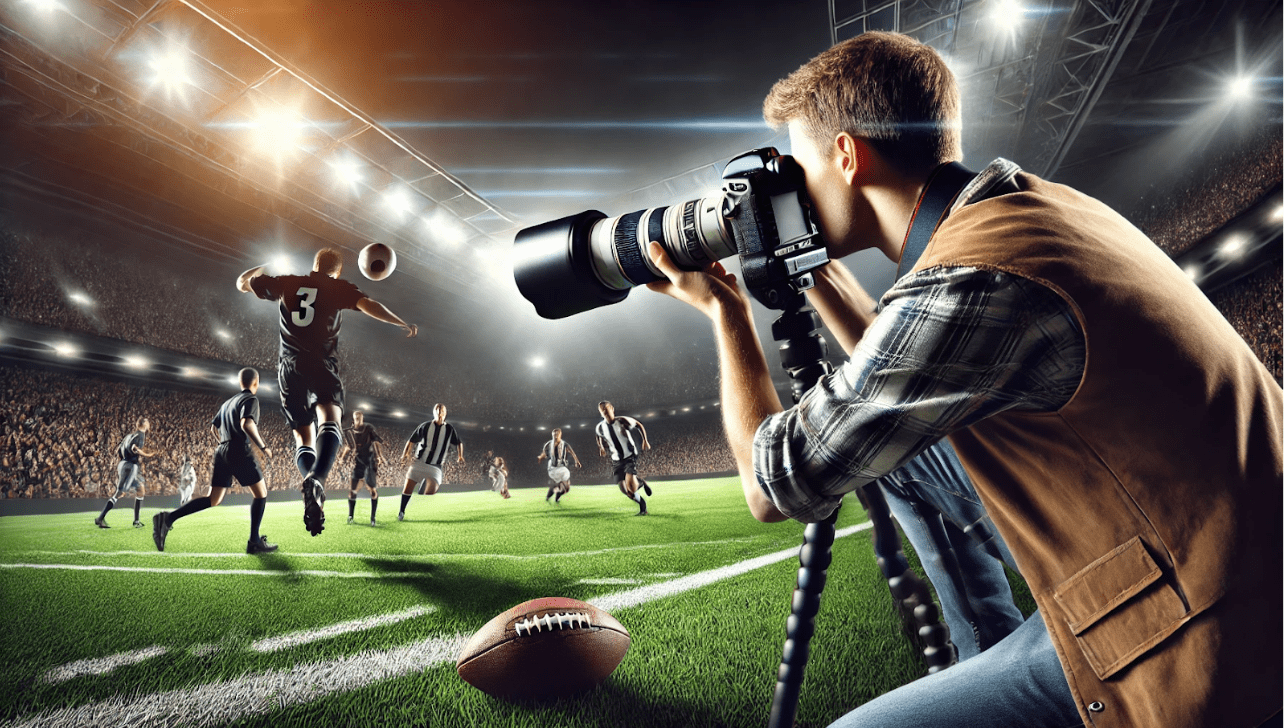For sports enthusiasts who want to blend their passion with photography, mastering the art of sports photography is essential. For those looking to enhance their sports photography game, especially when capturing those intense, fleeting moments, there are several crucial tips and techniques to consider. Additionally, for insights on sports data, analytics, and betting, you can check out betwinner registration.
Equipment Essentials
Choosing the Right Camera
The camera you choose is paramount. In 2024, top recommendations include:
- Canon EOS-1D X Mark III: Known for its rugged build and exceptional battery life, it’s ideal for high-speed shooting with a burst rate of 16fps and a robust Deep Learning Autofocus system.
- Sony a9: A mirrorless marvel, offering 20fps burst shooting and an impressive electronic shutter for silent shooting, making it perfect for capturing every critical moment without distractions.
- Nikon D500: Best value for action sports with a great balance of speed, resolution, and robust build, suitable for both professionals and enthusiasts on a budget.
Lenses for Sports Photography
The lens is as important as the camera body. Some top picks include:
- Canon RF 100-500mm f/4.5-7.1L IS USM: Excellent for capturing distant subjects with superb image quality.
- Nikon 70-200mm f/2.8: A versatile choice for various sports, offering a fast aperture for low-light conditions.
- Sony FE 70-200mm f/2.8 GM OSS: Provides sharp images and rapid autofocus, ideal for fast-moving subjects.
Mastering the Techniques
Shutter Speed and Aperture
Understanding shutter speed and aperture is crucial in sports photography:
- Shutter Speed: For sharp images of fast-moving subjects, use a high shutter speed (1/1000 to 1/2000 sec). For a more dynamic shot, a slower shutter speed (1/60 to 1/250 sec) can capture motion blur, adding a sense of movement.
- Aperture: A wider aperture (f/2.8 to f/4) allows more light in and creates a shallow depth of field, making your subject stand out against a blurred background.
Autofocus Modes
Modern DSLRs and mirrorless cameras come with sophisticated autofocus systems. Use continuous autofocus (AI Servo for Canon, AF-C for Nikon and Sony) to keep moving subjects in focus. Experiment with tracking focus to follow the subject’s movement, ensuring sharp images.
Practical Tips for the Field
Positioning and Lighting
- Keep your back to the sun: This ensures your subjects are well-lit as they approach you. Avoid shooting into the sun as it can create harsh shadows and overexposure.
- Anticipate the action: Be proactive rather than reactive. Learn the sport’s rhythm and predict where the action will happen. For example, in soccer, watch for muscle contractions that signal a player about to take a shot.
Composition and Background
- Create Emotion: Capture not just the action but the emotion surrounding it. Look for celebrations, disappointments, and candid moments that tell the story of the game.
- Background Control: A cluttered background can detract from your subject. Use a wide aperture to create a bokeh effect, blurring the background and making your subject pop.
Post-Processing
While the goal is to get the shot right in-camera, a bit of post-processing can enhance your images:
- Cropping and Adjustments: Crop to improve composition and adjust exposure, contrast, and sharpness.
- Avoid Over-editing: Keep edits natural. Over-processing can lead to unrealistic images.
Continuous Learning and Practice
Keep Practicing
The best way to improve is through constant practice. Photograph different sports to understand various dynamics and settings. Engage with other photographers and seek feedback.
Staying Updated
Keep abreast of new gear and techniques. Sports photography is continuously evolving with advancements in camera technology and post-processing software.
Conclusion
Sports photography is an exhilarating field that requires a combination of technical skills and an intuitive understanding of the sport. By selecting the right gear, mastering essential techniques, and continuously practicing, you can capture the intensity and emotion of sporting events effectively.
For further reading on various photography techniques, visit this link.
FAQ
What camera is best for beginner sports photographers?
The Canon T6i is an excellent entry-level DSLR, providing great value under $1000.
How can I improve my sports photography skills?
Practice regularly, learn the sport you’re shooting, and engage with the photography community for feedback and tips.
Should I invest in a high-end lens?
Yes, a high-quality lens often makes a bigger difference than the camera body. A good lens ensures sharp, clear images and better low-light performance.
What settings should I use for indoor sports photography?
Use a high ISO (1600-3200) for indoor lighting, a fast shutter speed (1/500 sec or higher), and a wide aperture (f/2.8-f/4).
By following these guidelines and continuously honing your craft, you can excel in sports photography and capture the thrilling moments that define the world of sports.


